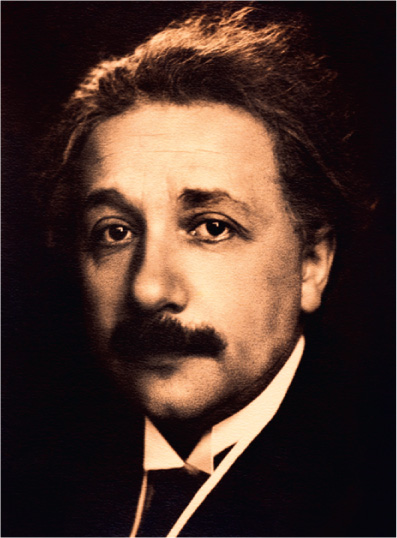
Particles of flour distributed in air demonstrate Brownian motion.
Experiment and observation came together in a series of studies which between them proved the existence of atoms. The date of the key experiment was 1827, but the observations went back to Roman times, and the explanation of what was going on was not completed until the twentieth century.
We have all seen motes of dust dancing in a beam of sunlight. Some of this motion is caused by convection and other currents in the air. But the Roman Lucretius spotted that something else is going on. Around the year 60 BC, in De Rerum Natura (On the Nature of Things), he wrote: ‘Observe what happens when sunbeams are admitted into a building and shed light on its shadowy places. You will see a multitude of tiny particles mingling in a multitude of ways … their dancing is an actual indication of underlying movements of matter that are hidden from our sight … It originates with the atoms which move of themselves. Then those small compound bodies that are least removed from the impetus of the atoms are set in motion by the impact of their invisible blows and in turn cannon against slightly larger bodies. So the movement mounts up from the atoms and gradually emerges to the level of our senses, so that those bodies are in motion that we see in sunbeams, moved by blows that remain invisible.’13

Nobody took much notice of this idea, and the Dutchman Jan Ingenhousz was puzzled when, in 1785, he noticed particles of coal dust ‘dancing’ on the surface of alcohol. But he did not follow up the observation, and it was left for the English botanist Robert Brown to carry out the key experiments on what then became known as Brownian motion.
Brown was studying pollen grains through a microscope in 1827. He noticed that when tiny particles (organelles) ejected from these grains were floating in water they moved in a jerky, zig-zag fashion. At first, he thought that these particles might be alive, and swimming about in the water. But as a careful scientist Brown tested this ideas using equally small particles of non-living material, such as cement, and found that small particles of anything suspended in liquid (or, indeed, smoke particles suspended in the air) moved in the same way.
From the 1860s onward, as the idea of atoms gained strength among scientists, there were suggestions that the particles move because they are being hit by atoms or molecules of the liquid in which they are suspended. But in order for a single atom to impart a big enough kick to explain the motion, the atoms would have to be nearly as big as the particles, and should be visible under the microscope. But later in the nineteenth century, Louis-Georges Gouy in France, and William Ramsay in England, each suggested a statistical mechanism for the phenomenon.
They pointed out that if a particle in a liquid is being buffeted from all sides by tiny atoms or molecules, although on average the force it experiences is the same from all sides, there will be moments when, just by chance, there are more atoms hitting one side of the particle than any other side. So it will jerk away in the opposite direction. Then, another statistical fluctuation will give it a jerk in another random direction. Neither of them did any calculations of how the effect might work, and it was left for Albert Einstein, in 1905, to put the numbers in and provide a precise mathematical explanation of how Brownian motion works. (Einstein hadn’t actually read the papers of Gouy or Ramsay, but worked it all out for himself.) He calculated that this zig-zag motion, now known as a ‘random walk’, would move a particle in random directions with each kick, but that over longer times the distance it moves from its starting point, measured in a straight line, is proportional to the square root of the time that has elapsed since the first kick. So it moves twice as far in four minutes as it does in one minute, four times as far in sixteen minutes, and so on. This prediction was tested in experiments by Jean Baptiste Perrin in 1908, and found to be correct. Einstein wrote to thank him, saying: ‘I would have considered it impossible to investigate Brownian motion so precisely; it is a stroke of luck for this subject that you have taken it up.’ In 1926, Perrin received the Nobel Prize for his work.

Towards the end of the twentieth century, some people claimed that Brown could not have seen what he claimed to have seen, because his microscopes simply were not good enough. But the microscopist Brian J. Ford then used one of Brown’s original microscopes to repeat the experiments from the 1820s, proving that Brown really did observe Brownian motion.